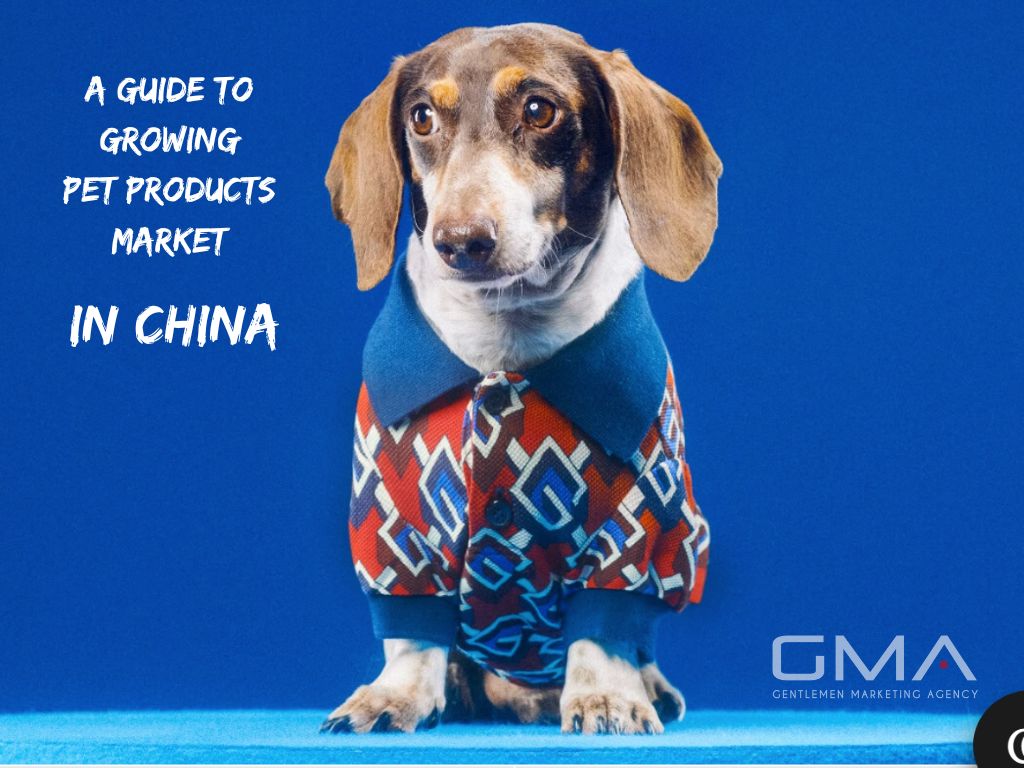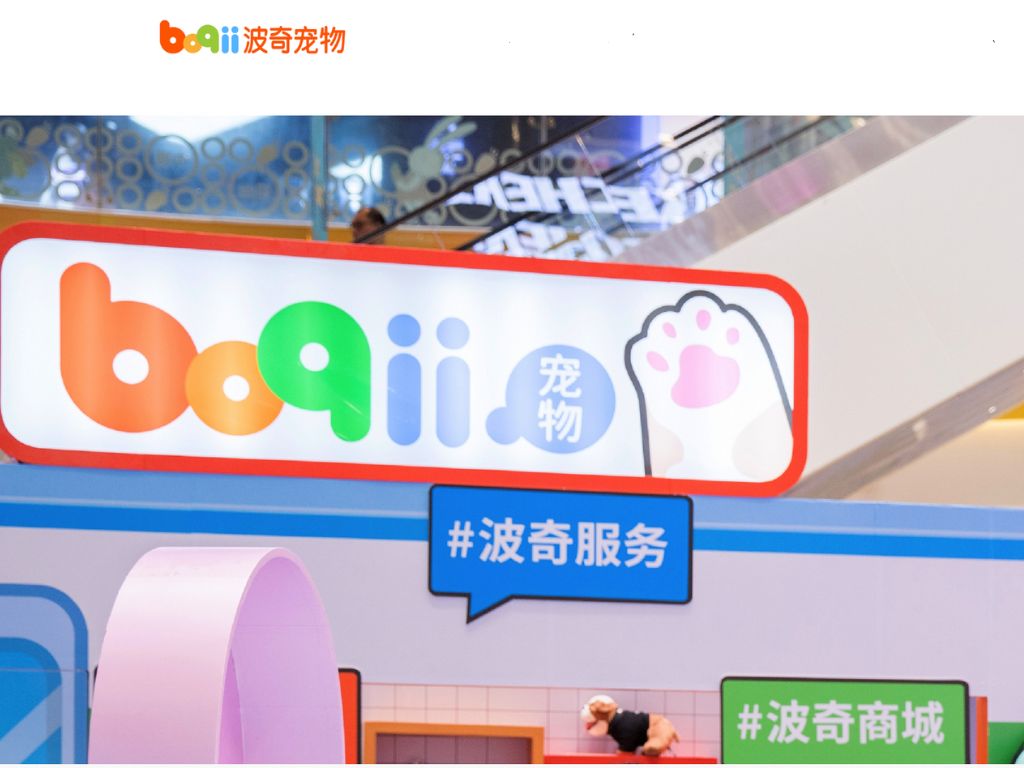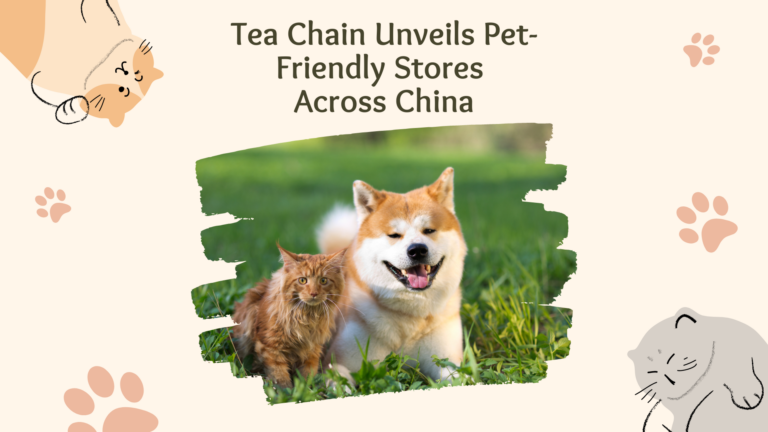A Guide to Sell Pet Products in China

2022-2023 the best guide about market Pet products in China for new brands. With the ever-changing demographic and cultural landscape, pet products market in China is burgeoning and provides a ripe opportunity for investors. Animals are no longer seen as practical creatures in China. They have become family members, particularly for Gen Z, who are rejecting traditional family structures.
Pet Products Market in China : Market size and potential
Pet products market in China expected to grow due to several factors, including:
Cost-Effective Agency
KPI and Results focused. We are the most visible Marketing Agency for China. Not because of huge spending but because of our SMART Strategies. Let us help you with: E-Commerce, Search Engine Optimization, Advertising, Weibo, WeChat, WeChat Store & PR.
- A continued rise in disposable incomes among the Chinese middle class
- More Chinese people living alone, particularly as more people marry at older ages
- The rise in divorce rates pushes single people to buy pets as company
- Willingness among pet owners to spend money on their pets
The immature pet products market in China has seen substantial growth in recent years, but there is still significant potential. The number of Chinese people who have pets grew from 7% in 2011 to 18% in 2019. This may seem like a large increase, but it pales when compared with mature markets such as the Australian market at 65%, and the US at 68%.

Humanization of pets
In recent years, the perception of pets has changed dramatically in many countries- including China. Whereas pet owners saw pets as companions before, now they form much stronger emotional attachments. This is especially true for younger generations of pet owners.
As most pet owners in China are younger generations, the humanization of pets is not uncommon. According to a recent study, 59% of pet owners think of their pets as kids, 30% think they are family members, and 8% take them as their best friends.
Cats over Dogs?
100 million pet dogs and cats live in urban areas of China as of 2020, making them the most common pets. Cats are the favorite furry friends of Gen Z, preferred over dogs. However, dog owners spend more on average per pet than cat owners. The pet owners spent an average of RMB 3000 per dog around RMB and 2000 for cats. In 2021, the dog market grew to RMB 14.3 billion while the cat market reached around 10 billion.

Who are the pet owners in China: Demographics of pet owners
Unmarried Millennials and Gen Z, who have joined the workforce make up the majority of pet owners. They are also typically well-educated, with higher degrees, falling into the mid-high income brackets.
Women are the main consumers spending money on pets, especially when it comes to pet treats.
Shanghai had the highest level of total spending for pets at RMB 19.7 billion pet products market in China.Shanghai is followed by Beijing with RMB 12.3 billions 2019. The other major cities with high spending on pets were Guangzhou, Suzhou, Tianjin, Hangzhou, Nanjing, Chengdu, Shenzhen, and Xi’an.

Market Structure of pet products and product types
In 2020, basic food items like dog or cat dry food made up the biggest portion of pet products market in China, with other items such as treats, clinic services, and supplies coming in second.
Pet necessities: mats, climbing items, housings, food plates, water pots, and cat trees. They are used to improve pets’ quality of life. They also make the pet owners’ life easier. Pet
Pet clothing: Functional clothing, shoes, collars, and leads. They are used to shelter animals from severe weather conditions and for cute appearances.
Pet toys: various types of balls, fake mice, furry animals, chewing toys, and training toys. They are used to entertain the animals, allow pets to expend energy, and enhance interaction with the pet owners.
Pet food: or pet feed are products that are industrially processed and produced. This can include pet feeds, premixes with additives included, and other types of pet food.
Pet treats can serve many purposes, such as education or reward for pets, interaction with pets, stimulation of chewing or tearing, and more.

Luxury Pet Products:
As pets become more like family to people, pet owners are increasingly open to spending significant amounts of money on them. Today’s pet products are far more diversified than in the past, with fashionable clothes and accessories now available from even luxury brands like Hermes, Gucci, and Fendi.
Key Pet Products Consumers in China and How to connect with them:
Millennials and Generation Z consumers:
The growing pet products market in China includes; pet food, supplies, medicines, and services is being driven by millennials and Gen Z consumers. And their choices are having a big impact on the market
For instance, Tmall sales data states that Chinese consumers who bought cat food are younger than the consumers who bought dog food. The reason behind this fact is clear. Generation Z prefers cats over dogs.
Social media platforms:
Some of the most popular people on social media in China are key opinion leaders (KOLs) and key opinion consumers (KOCs). These are internet-famous people who have a presence on social media platforms. They lead mass amounts of audiences by giving them recommendations. Through them, brands can utilize social media platforms to communicate with target consumers. and increase their influence.
The primary sources of information regarding pets in China are social media platforms, such as WeChat, Weibo, and Douyin. Younger generations spend a considerable amount of time on various e-commerce and social media sites watching videos or posts about other people’s pets.
In 2020, Xiaohongshu, a social media platform similar to Instagram in China, had over 2 million searches for pets carried out daily.
In other words, working with social media influencers who are popular with your target audience can help increase brand awareness.

Live Streaming Channels
On the super popular short-video platform Kuaishou live streaming has now reached tens of thousands of hours in a single month. Almost every 5 seconds a pet-theme Livestream session is broadcasted on this platform only.
With a massive influence on the target consumers, Videos of KOLs and KOCs on these live-stream platforms receive millions of views. Using the opportunity, brands present their products in use and answer questions from viewers in real time.
Consequently, pet food companies are now taking notice of pet live streaming and using it as part of their advertising. In 2019, pet food company Acana launched a pet live-streaming session on Taobao with pet celebrity Wang Keke, which resulted in sales of over RMB1 million in just one day.
Looking ahead, pet live streaming is likely to become an important marketing tool for pet products market in China. It allows brands to connect with pet owners and show off their products in a way that is interactive and engaging.
Which channels for distribution? Online or Offline?
In China, e-commerce shopping leads the way in the pet food market. Of every one hundred pet owners, fifty-nine of them make their purchases online while the remainder buy from offline channels like pet stores or clinics. In larger cities, more people are buying pet food online through e-commerce platforms- 65% in first-tier cities in 2020. When it comes to specific online channels, Taobao, Tmall, JD.com, and vertical websites like Boqii.com or Epet.com are the most popular among pet owners.
Online sales have also quickly bounced back from the COVID pandemic and are even growing faster than before. For example, the number of pet stores on Tmall increased by 85%. In addition, the growth rate of products for cats was much higher than that for dogs during this period.

Major trade shows for Pet Products market in China
Petfair Asia 100
Petfair Asia 100 welcomes exhibitors and 100,000 professionals in attendance. It covers pet food, pet goods, and medical and healthcare products.
China Pet Expo 101
With over 100,000 guests in attendance, the China Pet Expo 101 is one of the largest pet trade shows in the industry. With an expansive 70,000 sq meter exhibiting area, this event covers everything from pet food and supplies to services such as training.
China International Pet Fair
China International Pet Fair is a tri-annual event that occurs in Guangzhou, Wuhan, and Chongqing. The fair covers various aspects of the pet industry including food and medical supplies, clothing and accessories, as well as grooming products.

Consumption upgrades and Demands for Premium products in China
Chinese consumers are increasingly spending more money on high-quality goods and services, a trend known as a consumption upgrade. The increasing demand for cat products bodes well for the future of the premium pet food segment, which is experiencing strong growth.
While online sales of mid and high-quality imported dry cat food and treats are exploding, the fastest growing product type is a dry cat food that costs over RMB 50 per kilogram.
Tmall Global saw cat food as the best-selling category during the Singles’ Day shopping festival in 2019. It even beat out other popular import categories like baby formula and cosmetic facial creams. In addition, Tmall’s sales data shows that the average person spends 1.5 times as much on cat food online than they do on dog food. even though people still spend more money annually on dogs overall.

Local Brands VS Foreign Brands and Leaders of the market
A higher percentage of international brands dominate the cat food market, compared to Chinese companies. In 2018, sales data from Tmall and Taobao showed that foreign companies made up 76% of the market for cat food.
The pet products market in China is less developed as compared to other well-established markets such as the United States and Japan. The leading companies when it comes to market share are Mars, Shanghai Bridge Pet Care, Huaxing Pet Food, China Rongxi, and Xuzhou Suchong Pet Care.
Foreign brands such as Mars and Nestlé have had a tight grip on the Chinese pet food market for decades. However, in recent years we’ve seen local companies invest more in research and development, and utilize e-commerce platforms to help them grow quickly. This has allowed them to start challenging foreign giants.

Key contacts including major distributors and industry associations
- Ningbo Yihuang International Trading Co., Ltd.
- Beijing Yukangyuankaihong International Trading Company Ltd
- Suzhou Pet Action Co., Ltd
- Loving Care International Pet Medical Center
- China Animal Agriculture Association National Kennel Club

A case study: Boqii
Boqii is a one-stop pet services platform that offers both B2B and B2C solutions. It was established in 2009 in Shanghai and is part of Guangcheng Info-Tech Co., Ltd. The company has pet hospitals, pet clinics, pet hotels, and pet stores across China. It also has an online store that sells pet food, pet products, and pet supplies.
With over tens of thousands of products available for purchase, Boqii is the go-to destination for pet supplies. From food and snacks to clothes and shampoo, they offer everything the pet owners need. Partnered with more than 15,000 pet stores and hospitals across China, Boqii provides services like daily care, pet groom service, sterilization, and medical treatment.
Most of Boqii’s profits come from its e-commerce sales and offline store purchases, which goes to show that a cohesive online and offline presence can do wonders for marketing and monetary growth.

Boqii has established a successful two sides business model:
B2C business lines: Boqii Mall is an e-commerce platform where you can buy pet supplies, find information on pets, and also connect with other pet owners to share advice and experiences. Boqii Pet Services is a platform that helps users find local offline businesses that offer pet services, such as grooming or boarding.
B2B business lines:A software that can take the offline pet store and put it online where customers can shop easily and effectively. A supply chain management and in-store operations and coordinated marketing communication are included in this line.
Boqii also partners with Kuaishou, a top video-sharing mobile app, as well as notable influencers known as Key Opinion Leaders (KOLs) and Key opinion Creators (KOCs), to create content that drives marketing. This allows Boqii to take advantage of Kuaishou’s extensive audience reach and data analytics skills to help amplify its influence.

Key Points of the Pet Products Market in China.
- In China, the pet economy is rapidly growing and is projected to be worth 450 billion RMB by 2023.
- Many pet owners in China are millennials, living in large or mid-sized cities.
- When choosing a product for their pet, owners consider quality, price, safety, and brand.
- As pet ownership continues to rise, so does the demand for pet-related content on social media. Platforms that offer a variety of such content are successful in marketing products and brands while entertaining the audience.
- Numerous companies have chosen to partner with well-known pet influencers to tap into a larger customer base. Brands often work with pet KOLs to connect with potential consumers.



Super good article. very interesting.
Great potential in China as you say.